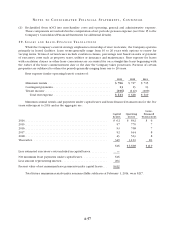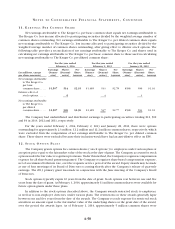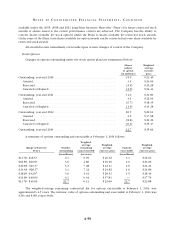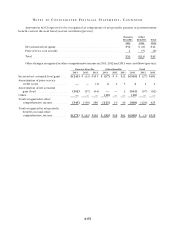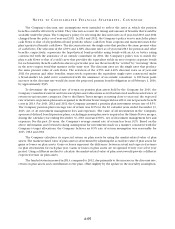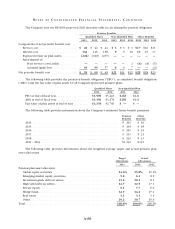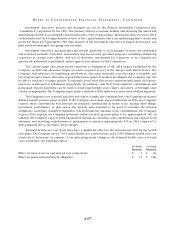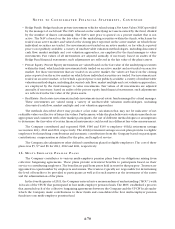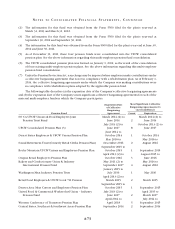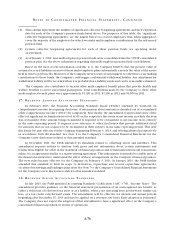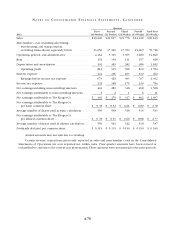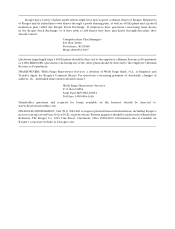Kroger 2013 Annual Report Download - page 140
Download and view the complete annual report
Please find page 140 of the 2013 Kroger annual report below. You can navigate through the pages in the report by either clicking on the pages listed below, or by using the keyword search tool below to find specific information within the annual report.
A-67
NO T E S T O C O N S O L I D A T E D F I N A N C I A L S T A T E M E N T S , CO N T I N U E D
Investment objectives, policies and strategies are set by the Pension Investment Committees (the
“Committees”) appointed by the CEO. The primary objectives include holding and investing the assets and
distributing benefits to participants and beneficiaries of the pension plans. Investment objectives have been
established based on a comprehensive review of the capital markets and each underlying plan’s current and
projected financial requirements. The time horizon of the investment objectives is long-term in nature and
plan assets are managed on a going-concern basis.
Investment objectives and guidelines specifically applicable to each manager of assets are established
and reviewed annually. Derivative instruments may be used for specified purposes, including rebalancing
exposures to certain asset classes. Any use of derivative instruments for a purpose or in a manner not
specifically authorized is prohibited, unless approved in advance by the Committees.
The current target allocations shown represent a combination of the 2013 targets established by the
Company in 2012 and allocation targets on assets acquired as part of the merger with Harris Teeter. The
Company will rebalance by liquidating assets whose allocation materially exceeds target, if possible, and
investing in assets whose allocation is materially below target. If markets are illiquid, the Company may not
be able to rebalance to target quickly. To maintain actual asset allocations consistent with target allocations,
assets are reallocated or rebalanced periodically. In addition, cash flow from employer contributions and
participant benefit payments can be used to fund underweight asset classes and divest overweight asset
classes, as appropriate. The Company expects that cash flow will be sufficient to meet most rebalancing needs.
The Company is not required and does not expect to make any contributions to the Company-sponsored
defined benefit pension plans in 2014. If the Company does make any contributions in 2014, the Company
expects these contributions will decrease its required contributions in future years. Among other things,
investment performance of plan assets, the interest rates required to be used to calculate the pension
obligations, and future changes in legislation, will determine the amounts of any contributions. The Company
expects 2014 expense for Company-sponsored defined benefit pension plans to be approximately $40. In
addition, the Company expects 401(k) Retirement Savings Account Plan cash contributions and expense from
automatic and matching contributions to participants to increase approximately $30 in 2014 compared to
2013 primarily due to the Harris Teeter merger.
Assumed health care cost trend rates have a significant effect on the amounts reported for the health
care plans. The Company used a 7.10% initial health care cost trend rate and a 4.50% ultimate health care cost
trend rate to determine its expense. A one-percentage-point change in the assumed health care cost trend
rates would have the following effects:
1% Point
Increase
1% Point
Decrease
Effect on total of service and interest cost components ......................... $ 5 $ (4)
Effect on postretirement benefit obligation ................................... $ 31 $ (26)


